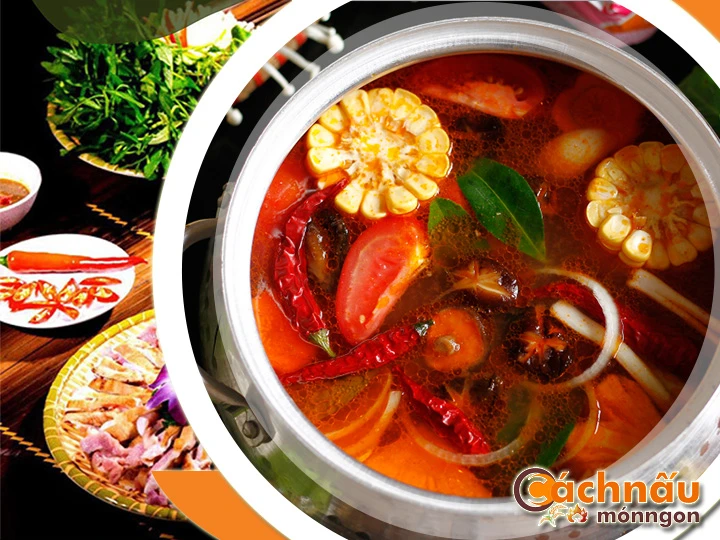Learn the Ultimate Rabbit Hot Pot Tips You Must Try - Lẩu thỏ
Learn the Ultimate Rabbit Hot Pot Tips You Must Try - Lẩu thỏ
Blog Article
Hot pot rabbit, a tasty and ethnic specialty, has been treasured across various cuisines and regions for centuries.

This comprehensive guide explores everything you need to discover about rabbit hot pot, from its historical background to present-day styles, health-focused properties, and step-by-step instructions for creating the flawless recipe at home. Whether you are a culinary expert or a cooking enthusiast, this guide will stimulate and assist you to perfect the skill of rabbit hot pot.
UNVEILING THE BACKGROUND AND TRADITIONS RELATED TO {BRAISED RABBIT DISH|HEARTY RABBIT MEAL|RABBIT HOT POT|RABBIT STEW|BUNNY CASSEROLE|RABBIT CUISINE|STEWED RABBIT
Rabbit hot pot serves as a special and classic dish with profound cultural roots in multiple countries. Its renown stems not only from its rich flavor but also from its historical and cultural significance.
Rabbit hot pot is a distinctive and historical dish with significant cultural connections in diverse locales. Its demand stems not only from its flavorful flavor but also from its historical and cultural significance.
- Historical Beginnings: Rabbit casserole began in farming communities where rabbits were a common, healthy food source. In historical China, it was a beloved dish, particularly during celebrations.
- Expansion Across Areas: In Western countries like Belgium, rabbit was historically prepared in stews, evolving into modern versions of contemporary hot pots as the dish rose in worldwide popularity.
2. Rabbit Casserole in East Asian Culture.
- In China: Known as 兔肉火锅 (Tù ròu huǒguō), rabbit hot pot is widely known in Sichuan cuisine, celebrated for its robust flavors and frequently prepared for special celebrations.
- Within Korea and Japan: While less frequent, rabbit hot pot is sometimes made as a herbal dish in Korea, or borrowing ideas from Japan’s nabemono-style cooking in traditional Japanese cooking, blending with local plants and flavoring ingredients.
- Vietnam: Although rabbit hot pot is not a regular meal, it is celebrated during special times or in rural areas where rabbit meat is commonly found. It is often cooked with distinctive spices such as scented lemongrass, fresh ginger, and chili, paired with fresh vegetables like swamp cabbage, green mustard, or aquatic greens. This dish is enjoyed for its singular taste and dietary value, frequently prepared for intimate gatherings.
Tại đất nước Việt Nam, tuy không đúng là món ăn được yêu thích hằng ngày, nhưng nổi tiếng trong các sự kiện lớn hoặc ở những nơi hẻo lánh, nơi nguồn thịt thỏ phong phú. Thường được kết hợp với gia vị đặc trưng như sả, thơm gừng, và ớt, kết hợp với rau tươi bao gồm cải bẹ xanh. Món ăn này rất phổ biến nhờ mùi vị khác lạ và lợi ích sức khỏe, thường được dùng trong các buổi gặp gỡ bạn bè.
3. Hearty Rabbit Meal embedded in Culinary Practices of Europe.
- In France: Frequently enjoyed as a robust stew with wine reduction, fragrant herbs such as rosemary, and vegetables like carrots and potatoes. Rabbit hot pot is a classic dish for festive gatherings.
- Within Italy: The dish “Cacciatore”, featuring rabbit prepared with a tomato and wine base, is a historical predecessor of hot pot-style rabbit dishes.
MASTERING RABBIT HOT POT: RECIPES AND METHODS
Rabbit hot pot is a flexible dish that combines seasonal ingredients, aromatic broths, and unique cooking techniques to create a filling and delicious feast. Below are key steps into the key recipes and methods to perfect rabbit hot pot.
The Fundamental Recipe for Rabbit Hot Pot
* Ingredients:
- 1 whole rabbit (cut into pieces)
- 4 cups of broth thưởng thức lẩu thỏ (bone broth)
- Vegetables (carrots)
- Spices and herbs (star anise)
- Seasonings (soy sauce)
- Optional: side dishes for serving
* Method:
- Prepare the Rabbit: Rinse and cut the rabbit into pieces. Marinate with salt, black pepper, and a splash of soy sauce for 30 minutes to enrich the flavor.
- Prepare the Broth: Heat a pot with a touch of oil. Sauté garlic and ginger until golden. Add your selected stock and bring it to a boil.
- Add the Rabbit: Add the rabbit pieces into the pot and let them cook slowly on a low flame for around half an hour until soft.
- Include the Veggies: Add your preferred vegetables and cook until they are tender but still bright.
- Serve: Transfer the hot pot to a large bowl. Serve with accompaniments and extras like rice or noodles.
Key Techniques for Cooking Rabbit Hot Pot
- Flavor Enhancement:
. Marinate the rabbit with a combination of salt, pepper, and spices to enhance its original taste.
. For more depth, use cooking wine or a mix of herbs such as rosemary and thyme.
- Adding Ingredients Strategically:
. Start by boiling the rabbit in the broth to release its savory taste.
. Gradually add vegetables based on their required time.
- Perfect Timing:
. Avoid letting it dry out the rabbit, as it can lose tenderness.
. Test for readiness by checking if the meat easily separates from the bone.
- Broth Adjustments:
. Perfect the flavor by adding additional seasonings as needed.
. Experiment with different broth bases, such as spicy Sichuan-style variations.
Tips for Success
- Choose Freshness: Always choose fresh rabbit meat and seasonal vegetables for the highest quality.
- Achieve Harmony: Be aware of the spiciness in the broth. Taste and adjust frequently during cooking.
- Creative Accompaniments: Offer a variety of sauces like spicy garlic dip or soy-based dips to enrich the dining experience.
- Serving Style: Use a communal pot or serve the hot pot at the center of the table to promote sharing.
By mastering these cooking techniques, you can make a rabbit hot pot that’s both flavorful and visually appealing, making it a star attraction for any gathering or dining experience.
Report this page
